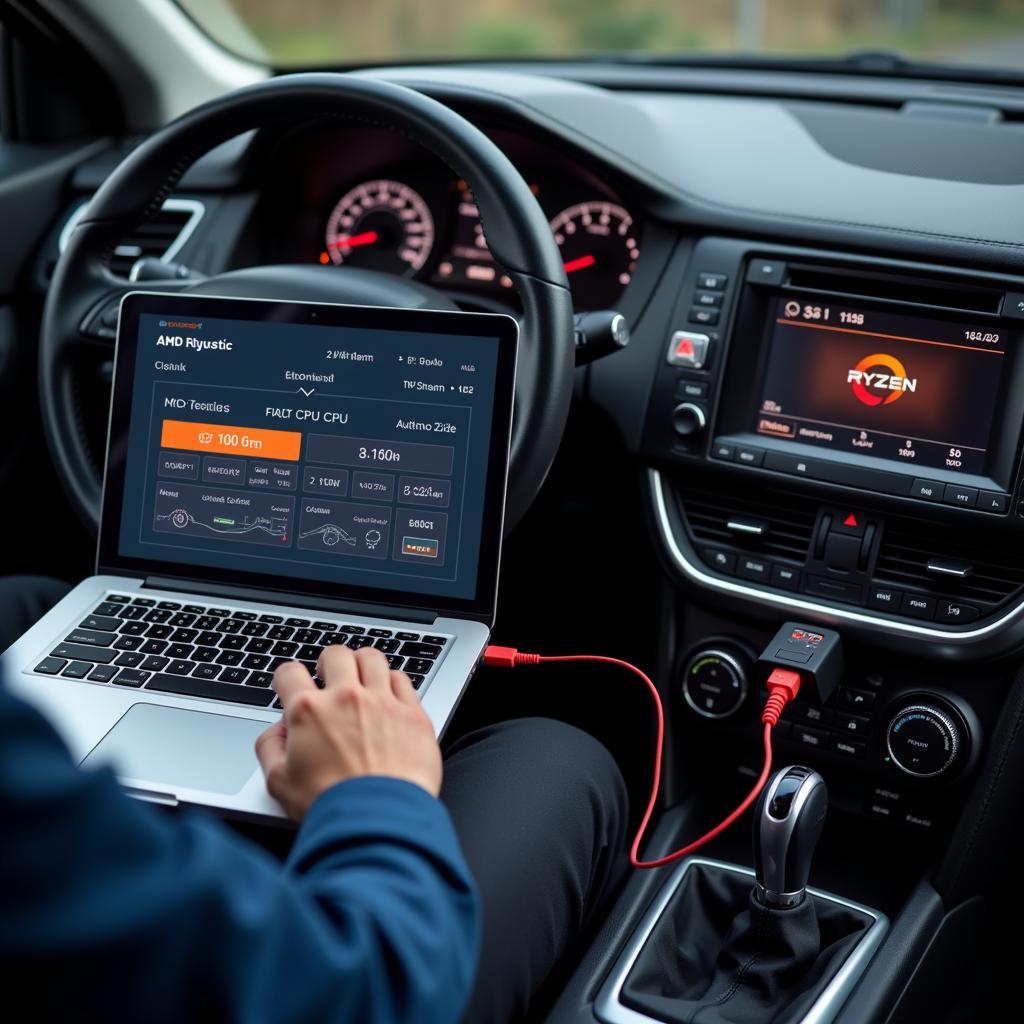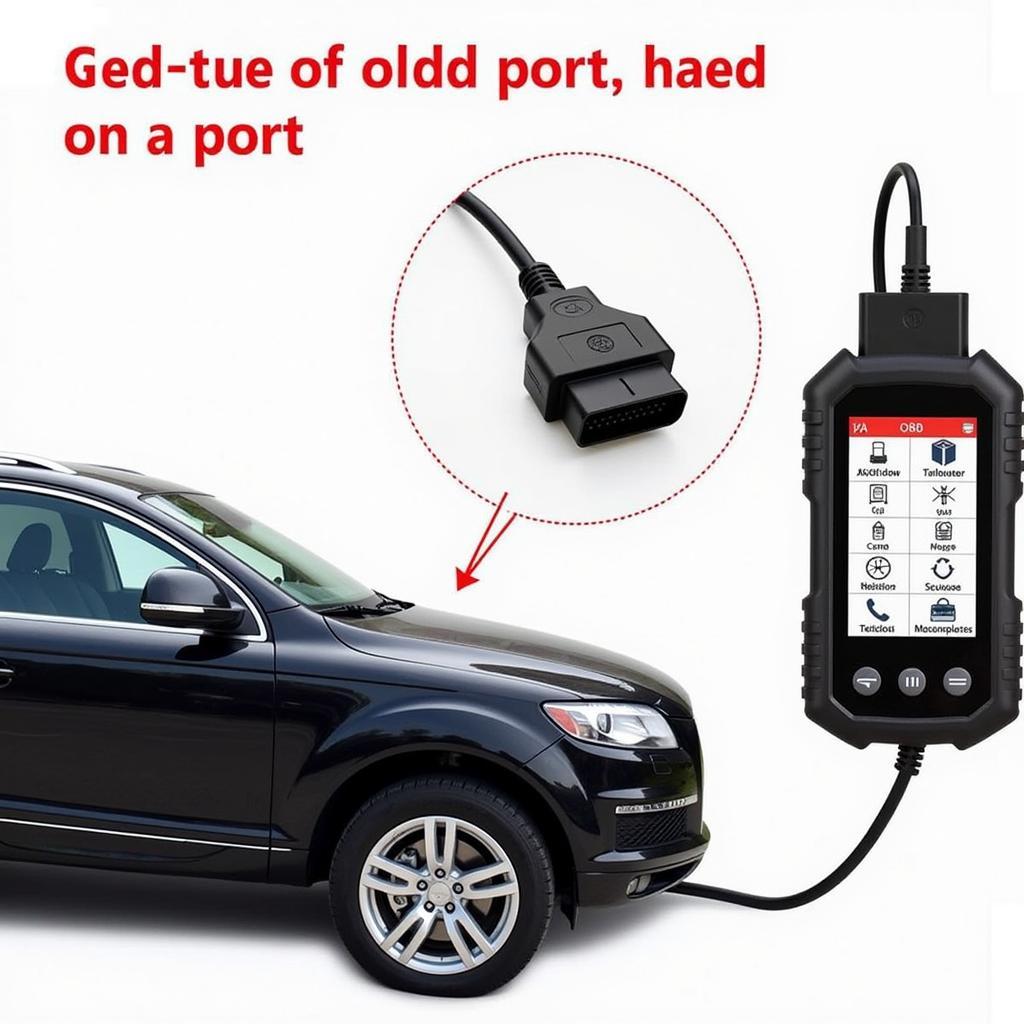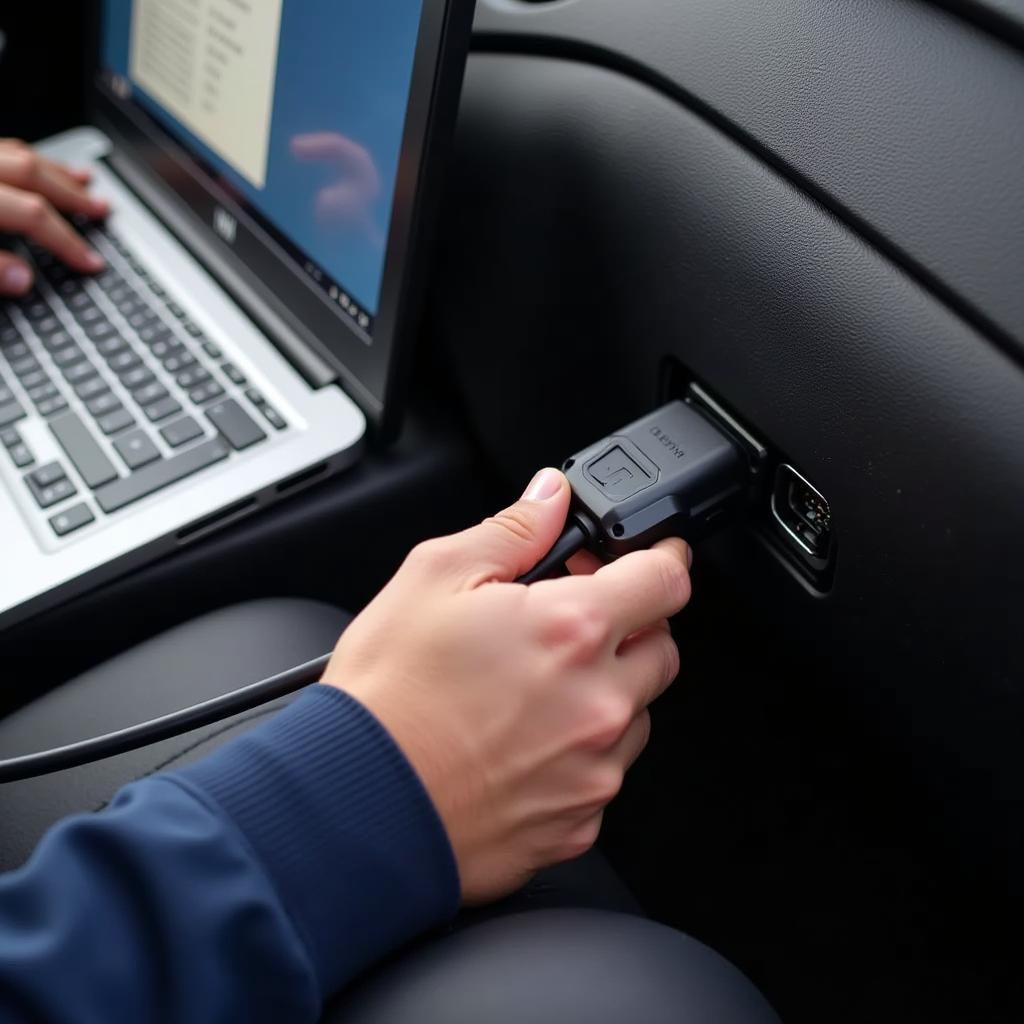Understanding the meaning of “diagnostic tool” is crucial for any car owner, mechanic, or automotive technician, regardless of language. While the direct translation in Hindi might be “निदान उपकरण” (nidaan upakaran), the true meaning goes far deeper than just words. It encompasses a powerful technology that allows us to pinpoint problems, optimize performance, and ultimately keep vehicles running smoothly. Let’s delve into the world of automotive diagnostics, exploring its significance and how it empowers us to maintain and repair our vehicles effectively.
A diagnostic tool, in its simplest form, is a device that communicates with a vehicle’s onboard computer system. This system, often referred to as the Engine Control Unit (ECU) or On-Board Diagnostics (OBD) system, constantly monitors various sensors and components throughout the vehicle. It’s like the car’s central nervous system, collecting vital data about engine performance, emissions, transmission function, and much more. The diagnostic tool acts as the bridge, allowing us to tap into this wealth of information and understand what’s happening under the hood. Similar to diagnostic tool meaning in hindi, understanding the core function of these tools is paramount.
What Does a Diagnostic Tool Do?
A diagnostic tool performs several key functions:
- Reads Diagnostic Trouble Codes (DTCs): When a problem arises within the vehicle’s systems, the OBD system generates a specific code, known as a DTC. The diagnostic tool reads these codes, providing a starting point for troubleshooting.
- Displays Live Data: Beyond DTCs, the tool can display real-time data from various sensors, such as engine RPM, coolant temperature, oxygen sensor readings, and more. This live data provides valuable insights into the current operating conditions of the vehicle.
- Performs Actuator Tests: Many diagnostic tools allow users to activate specific components, like fuel injectors or solenoids, to test their functionality. This helps isolate faulty components without resorting to guesswork.
- Resets Warning Lights: Once a problem is resolved, the diagnostic tool can be used to clear the DTCs and reset the check engine light or other warning lights on the dashboard.
- Programs and Adapts Modules: In some cases, diagnostic tools can be used to program new modules, update software, or perform adaptations after repairs.
Types of Diagnostic Tools
Diagnostic tools range from simple code readers to sophisticated professional-grade scan tools.
- Basic Code Readers: These affordable devices primarily read and clear DTCs. They are suitable for DIYers who want to understand the cause of a check engine light.
- OBD-II Scan Tools: These tools offer more advanced features, such as live data streaming, actuator tests, and some bi-directional control.
- Professional Scan Tools: Used by experienced technicians, these tools offer comprehensive functionality, including advanced diagnostics, programming, and coding capabilities.
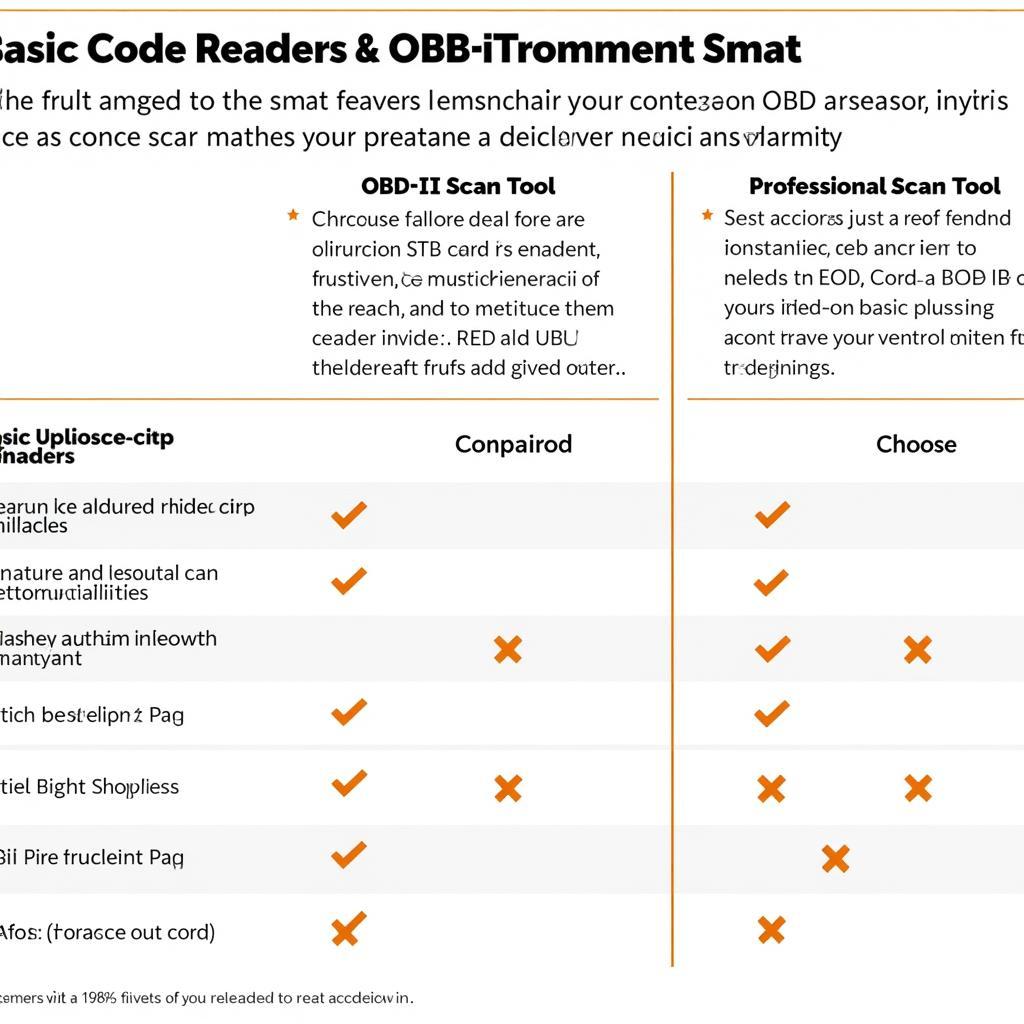 Comparison of Different Diagnostic Tool Types
Comparison of Different Diagnostic Tool Types
Why is Understanding Diagnostic Tools Important?
For car owners, understanding diagnostic tools empowers them to take a more proactive approach to vehicle maintenance. Early detection of potential issues can prevent costly repairs down the line. For mechanics and technicians, diagnostic tools are indispensable for efficient and accurate troubleshooting.
How Diagnostic Tools are Changing the Automotive Landscape
Diagnostic tools are continuously evolving, incorporating new technologies and functionalities. The increasing complexity of modern vehicles necessitates the use of sophisticated diagnostic equipment. This trend underscores the importance of staying updated with the latest diagnostic tools and techniques.
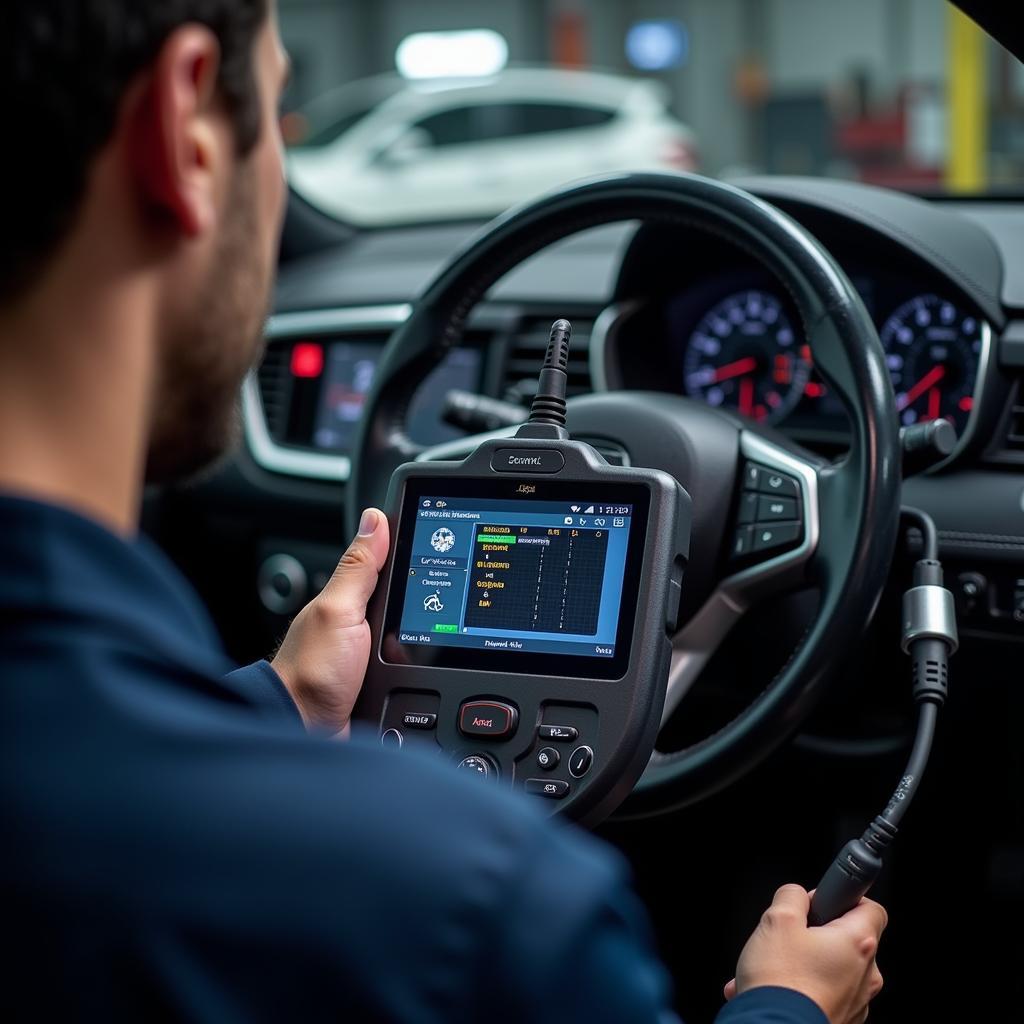 Modern Car Diagnostic Process Using Advanced Tools
Modern Car Diagnostic Process Using Advanced Tools
Common Questions About Diagnostic Tools
What is a pre-diagnostic check? A pre-diagnostic check involves a visual inspection and basic tests performed before using a diagnostic tool. It helps narrow down the potential problem areas. Similar insights can be gained from pre diagnostic tool meaning which provides a deeper understanding of this essential preliminary step.
Conclusion
Understanding the meaning of “diagnostic tool,” whether in Hindi or any other language, is essential for anyone involved with vehicles. These powerful tools have revolutionized the way we maintain and repair cars. From simple code readers to advanced scan tools, they provide invaluable insights into the inner workings of our vehicles. At ScanToolUS, we provide a range of high-quality diagnostic tools to meet the needs of DIYers and professionals alike. Contact us at +1 (641) 206-8880 or visit our office at 1615 S Laramie Ave, Cicero, IL 60804, USA for assistance with your diagnostic needs.
FAQs
-
What is the cost of a diagnostic tool?
Diagnostic tools range in price from around $20 for a basic code reader to several thousand dollars for professional-grade scan tools. -
Can I use a diagnostic tool on any car?
Most modern cars (post-1996) are equipped with the OBD-II system, which is compatible with a wide range of diagnostic tools. -
What if my diagnostic tool doesn’t find any codes?
A lack of codes doesn’t necessarily mean there’s no problem. Some issues may not trigger a DTC. -
Do I need special training to use a diagnostic tool?
Basic code readers are relatively easy to use, while advanced scan tools require more technical knowledge. -
Can a diagnostic tool fix my car?
No, a diagnostic tool helps identify problems but doesn’t perform repairs. -
What is the difference between OBD-I and OBD-II?
OBD-II is a standardized system used in most modern cars, while OBD-I varied between manufacturers. -
Where can I learn more about automotive diagnostics?
Numerous online resources, training courses, and books are available to learn more about automotive diagnostics.

